The Importance of Handlebar Height & Why It's Often Overlooked
Not many people talk about bar height. Perhaps that's because you can't really "sell" a particular bar height in the way that you can market a wheel size, stanchion diameter or fork offset. The thing is, in my view bar height makes a much bigger difference than any of those things.
In my job I do a lot of back-to-back testing of different bikes, components or setups. But to be honest, in a lot of cases it's splitting hairs. In contrast, even a 5mm change in bar height can have a noticeable effect on how the bike handles, yet this tuning option is often overlooked. And because of the way bikes are designed, I think a lot of people are not running the optimum bar height.
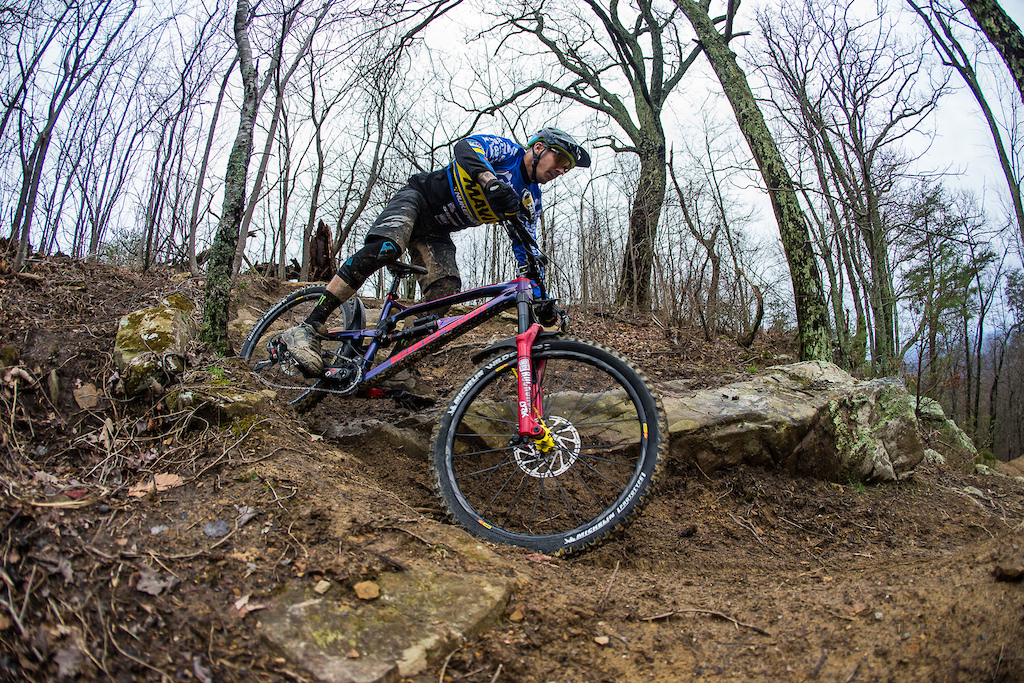
The right bar height is important for maintaining enough bend in the elbows for traction at the front, without feeling forced too far forward or too far back.
Why is bar height important?
The main thing is to keep a good amount of bend in your elbows while in the attack position. You want enough of a bend so that you can push the front wheel down into down-slopes and holes to maintain pressure on the front wheel, but not so much that you have less room to absorb impacts. This arm movement is a bit like sag in suspension - you need enough elbow bend to allow you to extend your arms to maintain grip, but leave enough room to absorb impacts.
If the bar is too low you might find yourself hyper-extending your arms while trying to push the bike away to maintain contact with the ground on steep steps or downslopes. It also makes it harder to look up to see further down the trail, and it's harder to manual too. If the bar is too high, your weight can feel pushed back off the front wheel, or the bar feels too close to your chest. To me the subjective feeling is one of being disconnected from the front wheel and too upright - like riding a Segway. A bar that's too high can also make the bike feel slower to change direction in tightly alternating turns.
So important is bar height that I believe it's been hiding at the heart of the wheel size debate all along. If you go from a 26" bike to a 29er the axle is taller and the fork is longer, which means there's a very good chance the 29er bar is much higher. I think this is a big part of the reason why 29ers were said to create feeling of being "in the bike" and more reluctant to initiate a turn. The reasons usually suggested for this are bottom-bracket drop and gyroscopic stability, neither of which hold much water. I also think that one of the main effects that occurs when changing the geometry of a bike with a flip chip is the difference between the bar height and bottom bracket (the effective stack) increases in the low position. This usually goes unmentioned, but is arguably more important than a 0.5-degree change in head angle.
Why saddle-to-bar drop is like sag
If bar height is mentioned at all it's usually measured from the ground to the grips, but this is far from ideal. For a start, it doesn't take into account bottom bracket height, which can vary by as much as 20mm between bikes with similar travel. A better measure is what I'll call the effective stack - the vertical distance from the bottom bracket to the grips. This is just as important as the effective reach - the horizontal distance from the bottom bracket to the grips.
What really matters is the effective stack in relation to the height of the rider. A good guide for this is to look at the saddle height with the dropper extended to "proper" pedaling height. The saddle height takes BB height into account, and the distance from the BB to saddle is a very good indicator of the rider's leg length, which is strongly correlated with their height.
Road cyclists occasionally talk about saddle-bar drop - the difference in height between the saddle top and the top of the handlebars. Of course this measurement has a direct effect on the ergonomics of the position when riding seated, but it's also a good guide to how the bike will feel when descending with the saddle dropped because it indicates how the effective stack relates to your height.
In these bike check shots, Richie Rude (left) is running a small amount of saddle-bar drop, while Damien Otton (right) looks to be running slightly negative drop (the grips are higher than the saddle). I'd say both are within the normal range for trail/enduro.
After trawling through dozens of bike check photos, it seems like most enduro/trail bikes are set with the grips roughly level with the saddle top when it's at full extension (so zero saddle-bar drop), and personally, this is about where I find my ideal bar height. XC race bikes (as in the diagram above) are sometimes setup with a lot of saddle-bar drop, but the setups of pro XC racers is not necessarily representative of most mountain bikers' needs. This makes handlebar drop a useful benchmark, because for most riders setting the grips level with the saddle could be a good starting point.
Of course this won't work for some riders. For many reasons including limb proportions, flexibility and (perhaps most of all) what you're used to, you may prefer your grips significantly above or below the saddle. But that doesn't stop saddle-bar drop being a useful metric. As an analogy, setting suspension with around 30% sag is usually a good starting point; you may want to go stiffer or softer depending on your riding style or bike setup, but sag precentage is still a useful measure because it takes into account your weight and how much travel you have. Similarly, running your bars level with the saddle is a good reference point because it takes into account your BB height and your leg length/height, but some riders may want to go a bit higher or lower.
Sam Hill's 27.5" Mega from 2017 (left) and 29" Mega from 2019 (right). It's hard to be sure because of the camera angle, but it looks as if both bikes are running a similar amount of saddle-bar drop.
Caveats
There are a couple of problems with saddle height as a reference point. Firstly, the effective seat angle affects saddle height, but won't affect your ideal bar height when descending. But for an average BB-to-saddle distance, the difference in saddle height between a 80-degree and a 75-degree effective seat angle is only about 13mm. Secondly, suspension sag. Of course it only matters how your bike handles once you're actually riding it, but if you have a full suspension bike and the suspension is well-balanced, the BB and grips should drop a similar amount under sag when in the attack position. Of course this isn't true when braking, so a higher bar height might be ideal for steep tracks.
The relationship between stack and reach
Another factor which might affect your ideal stack height is reach. The distance measured directly from the BB to the grips (in 2D space) is the hypotenuse in a right-angled triangle made up of the effective reach and stack. This distance is known as spread; it dictates how roomy the bike feels.
You might imagine that as reach increases you might want to decrease stack in order to preserve a similar amount of spread. However, I've found the opposite to be the case. A given effective stack on a long-reach bike can make the position feel too stretched-out like Graham Obree, making it harder to get your weight back, manual and look down the trail. The same stack height on a short-reach bike can feel too upright like Easy Rider. I find that the more reach a bike has, the higher the bar height I want. So far from preserving the spread, I'm closer to preserving the same angle between feet and hands, or in other words the same ratio of effective stack and reach. But while reach numbers have got longer in recent years (and that's a good thing), stack hasn't changed as much.
On the subject of stack and reach, trigonometry tells us that for every 10mm spacer under the stem you'll gain about 9mm in vertical effective stack but lose about 4mm of effective reach because of the slope of the head angle. So if two bikes have the same frame reach on paper but different stack, the one with less stack will have a shorter effective reach once you've added spacers to bring the bars to the same height. This is worth bearing in mind when comparing bikes because those with a low stack height will feel shorter than the reach number alone suggests.
Frame size matters
Nobody would put up with an incorrect saddle height, so the seat post insertion is hugely adjustable to suit a wide range of leg lengths. But at best, there's usually only a couple of centimetres of adjustment in the bar height via spacers.
And while the seat tube length varies by a lot between frame sizes, so the range of available saddle height scales with the rider, the stack height often changes very little between frame sizes. You can only make a head tube so short before it becomes weak, and small riders still want 29" wheels and plenty of fork travel. I'm not sure why XL or XXL bikes don't have longer head tubes, though I suspect it has a lot to do with aesthetics or showing a longer reach number on paper. But for whatever reason, the head tube length, and therefore stack height, changes very little between the largest and smallest size.
Courdourier (left) has her bars visibly higher than her saddle, while Connor Hamilton (right) has his much lower. This is typical for riders on either end of the height spectrum.
For example, the new YT Capra 29 has a five-size range going from small to XXL. YT recommends the small to riders around 160cm, and the XXL to riders of 197cm - that's a difference of 23% in rider height. Across that range the reach goes from 427mm to 507mm - a difference of 19% - but the stack goes from 625mm to 652mm - a difference of just 4%. Another way of looking at it is the ratio of stack to reach goes from 1.46 in the small to 1.29 in the XXL. Surely both can't be right. And I'm not picking on YT here; my point is this is entirely typical.
As I said earlier, it's the effective reach and effective stack which matter for ergonomics, but bikes are usually fitted with the same handlebar rise, stem length and number of spacers across the size range. So a lot of short riders probably have their bar height too high, and a lot of tall riders have theirs too low. Changing handlebar rise can compensate in many cases (at 190cm tall I'm fitting a 40mm-rise bar to most bikes I test) but if you're particularly small or tall this may not be enough so you might want to avoid bikes with too much or too little stack, respectively.
Conclusion
A friend of mine was scratching his head because he felt more comfortable ripping his 29" hardtail down steep turns than his 27.5" enduro bike. Was it the wheel size, the head angle, the fork offset, or something else that he didn't like about his bigger bike? It turned out the 29er had a much higher bar height relative to the bottom bracket, so I gave him a 40mm rise handlebar for the 27.5" bike and that seemed to cure the problem entirely.
There's no "right" bar height, but just paying attention to this important adjustment is a good start. Nobody would put up with whatever saddle height their bike had out of the box, yet many riders never change the bar height. If the stem spacers don't provide enough adjustment range - and there's a good chance they won't - then a higher-rise or lower-rise bar could be the best upgrade you'll ever make. Measuring the height of the grips relative to the saddle at full pedaling height is a good place to start because it takes into account your BB height and leg length. But remember small differences can be noticeable so it pays to fine-tune with spacers too.
Author Info:
Must Read This Week
Sign Up for the Pinkbike Newsletter - All the Biggest, Most Interesting Stories in your Inbox
PB Newsletter Signup
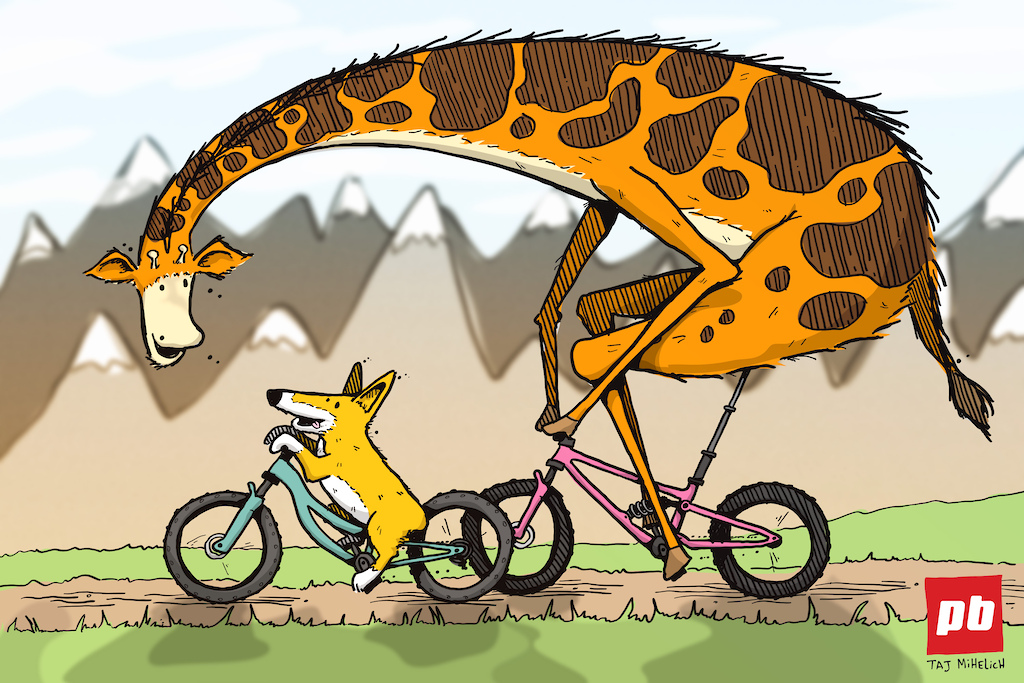
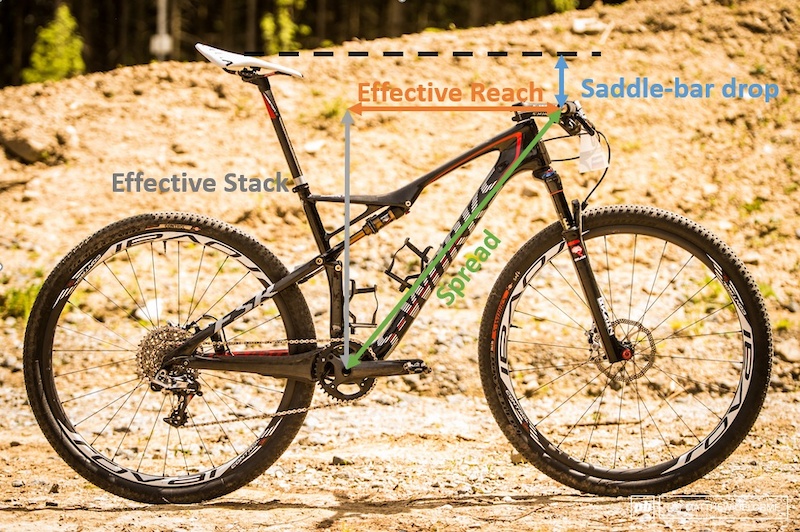
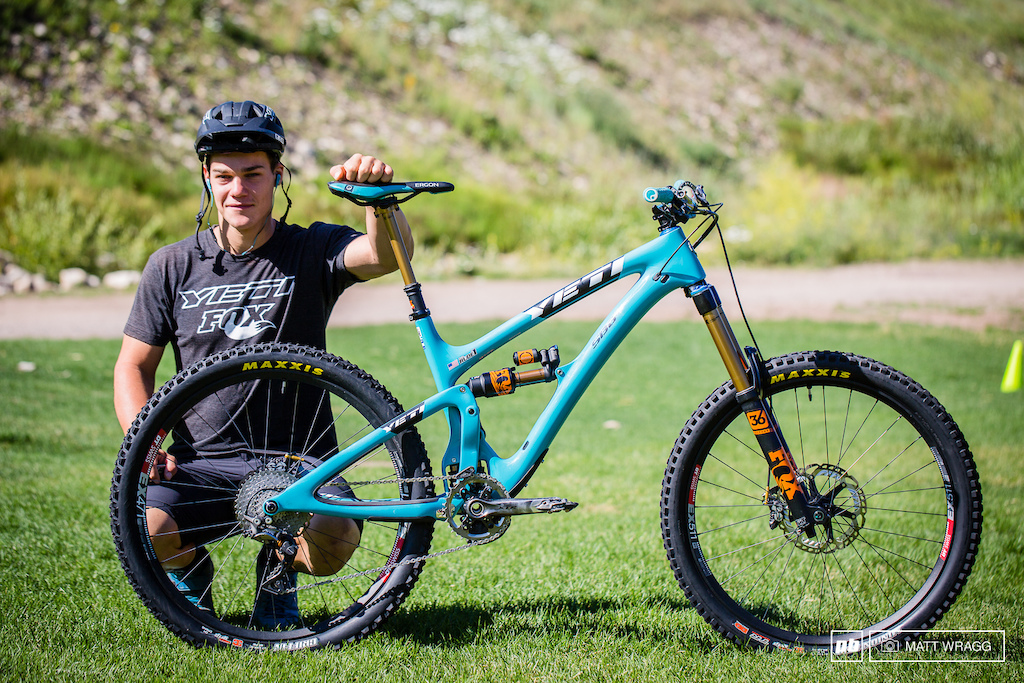
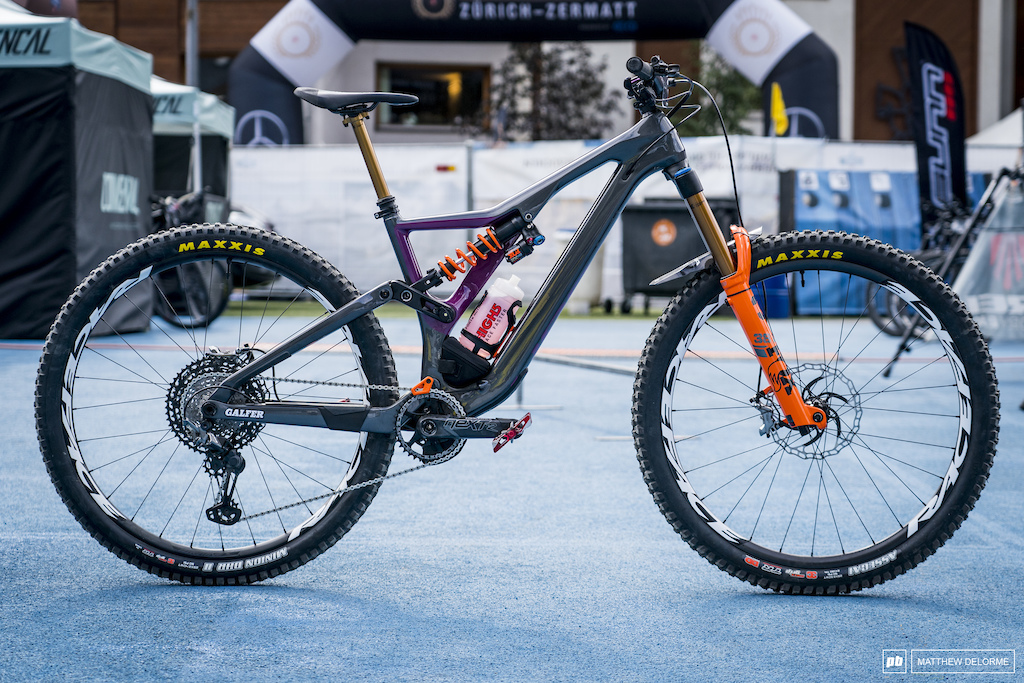
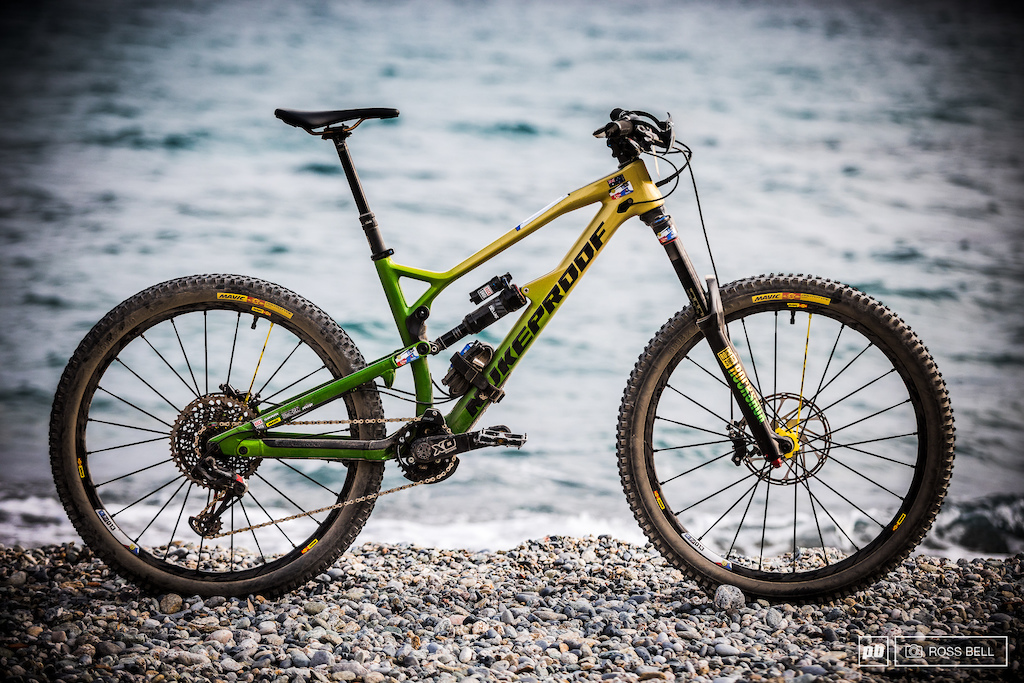
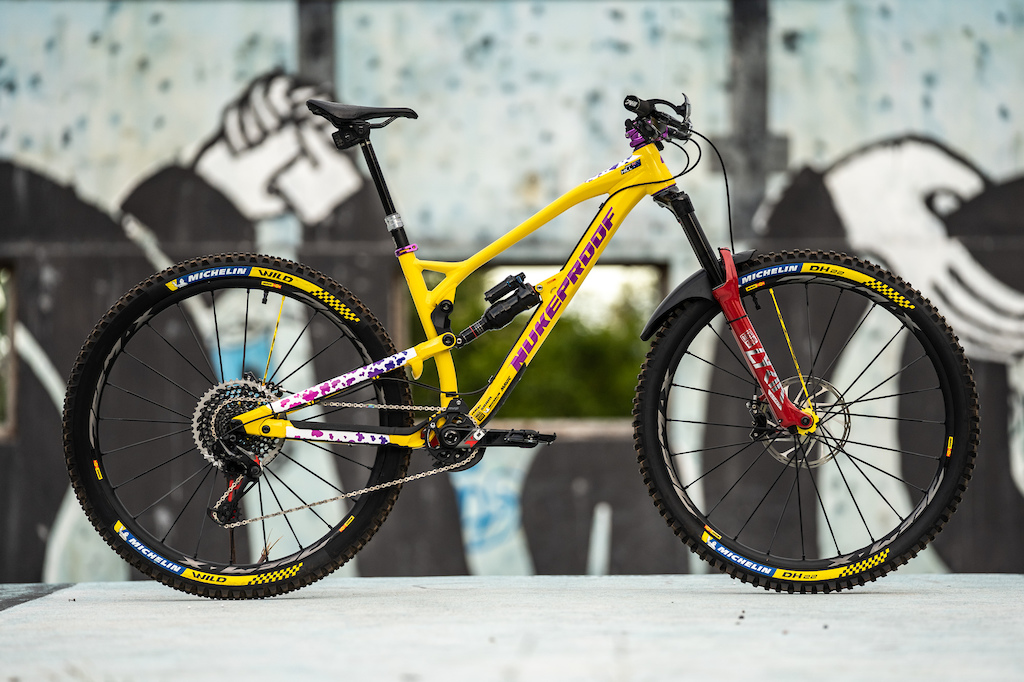
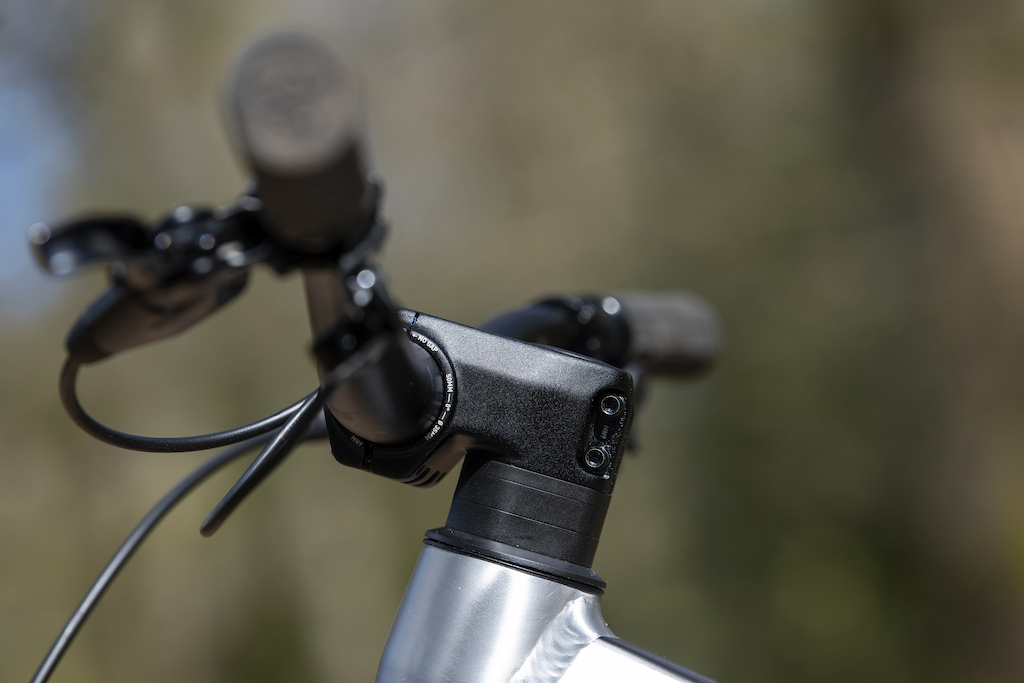
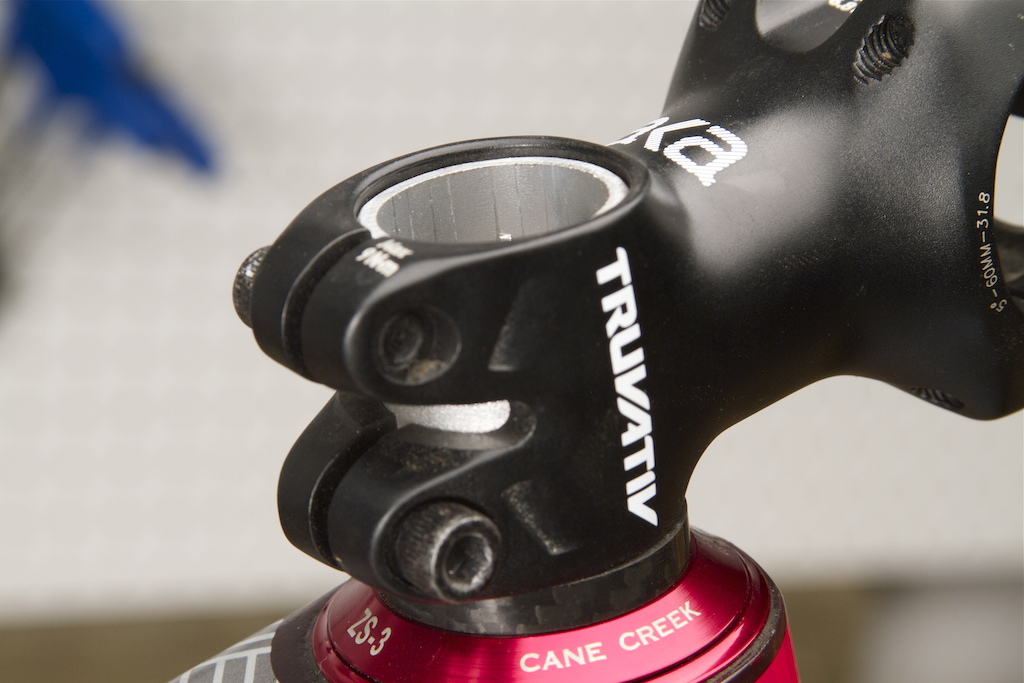
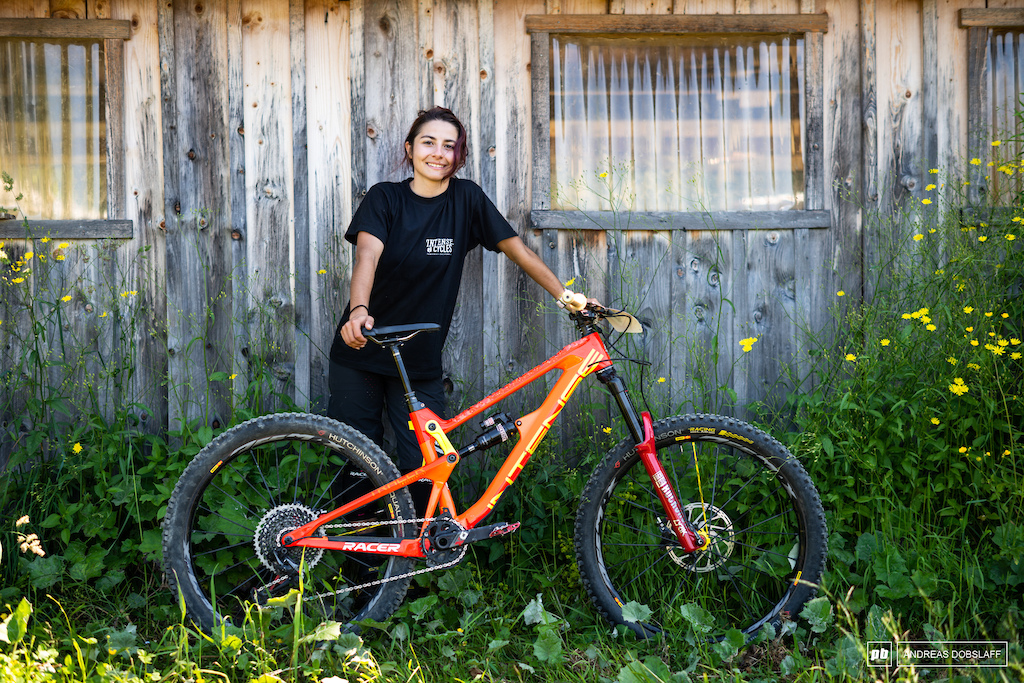


It is great to see others, especially a pinkbike staff member, promoting this concept considering how messed up bike sizing is right now. I have used this method for a number of years and it has taken the guess work out of choosing which frame size to get. I know what Spread or RAD measurement i want, then from the reach and stack of the frame I can tell if the frame will allow me to set up my bike how I want it to be.
Lets get away from just using reach to determine if a bike will fit because a frame with a 450mm reach and 600mm stack is much different than a bike with 450 reach and 640 stack.
I would love to see companies publish the effective down tube measurement (BB to top of head tube) of a frame plus the range the Spread or RAD of the bike set up how it is intended.
This is a really good article though. I’ve had many of the same thoughts about fit but this crystallizes his thoughts better than I had. I have thought about steeper seat tube angles too. I think as the bb moves under the saddle the rider will need a higher bar position to maintain a seated balance while riding flatter terrain with the seat up.
My 2 favorite bikes fit the formula, so I'm buying.
Using assumptions to fit a bike like long torso, long/short arms/legs gets confusing very quickly. If you know what your neutral RAD/spread is you can make an informed decision of frame size, bike set up and know what effect will occur when you make a change.
People frequently are riding bikes that are ill fitted because the Size charts are all over the place from company to company. While it may not be perfect it provides some clarity.
For example on my bike I can get the same RAD measurements with a 60mm stem slammed as a 50mm with 10-15mm of spacers underneath.
Lee’s method is correct in my opinion as it’s how I’ve always set up my bikes but there’s still an element of trying out different ways of achieving the RAD number and seeing what works best for you.
It is harder to really effect the bar height while staying with the same RAD because effective stack is partially set from fork axle to crown and head tube length. bikes with longer travel will automatically have a higher effective stack because of this. Basically presenting the angle of the RAD/Spread. Think XC vs DH bike.
Aside: Love how the goofball stupid comments get the points to get to the top. I thought PinkBike had less immature clowns than MTBR.
In the real world, changing the stem, top headset, spacing between stem and top headset, and handlebar rise can all impact a bike's RAD. On my Excel calculator, I use trigonometry to enable me to calculate the impact of the above inputs, plus frame reach, head angle and stack, on a bike's RAD. That way, I'm trying to find the bike and set up that comes closest to the RAD, RAAD, and RAD/Rear Center Ratio that looking for.
That said, I'm not super strict with applying the results to real world purchases. It helps me narrow the field of options to just a handful of bikes, and helps me know what set up to use for whichever of those bikes I end up purchasing. I happened to buy the top scoring enduro bike in 2021, in large part because there was one available at a local dealer. If I was to buy a trail bike, I would likely get the #4 scoring bike since it has more space in the front triangle, and is easier to get locally than the bikes that score better. And I'm confident I would love that #4 bike.
I've been trying Salsa 11 degree and SQLab 12 and 16 degree bars.
I much prefer the 11/12 bars on enduro bikes, and 16 for a more xc setup.
Im also riding the sqlab, why did you choose the 16degrees for XC?
I wonder how much that plays into all the photo's in this story?
How long are your stems to handle the backsweep without going behind the steering axis with you hands?
I guess I will be fine with the 50mm and perhaps can even go shorter. Time will tell...
Hmm ok. I will stay with 12.
Perfect for jumps etc.
Hell yeah!! \,,/
Are there any nice stems available in 31.8?
Or just 35?
I have one from Newmen. I also had the Nukeproof Horizon and SQLab on the list. All in 31.5.
As a shorter rider you tend to be lead into the trap of overly low bar height when in fact your torso to limb length ratio should play an equal role in that decision. Through many iterations of trial and error and a bunch of $$ spent on cockpit components over the years I've learned that:
I ride a modern geometry medium bike (440-450 reach) with a higher than saddle bar height (38mm rise bar 5mm stem spacer under) better than I ever could ride a small (410-425 reach) and lower bar height. Way more front end grip.
I used to have to run my fork crazy stiff to maintain any grip at all with the lower bar height. Now I can get some comfort back with the higher bars and allow the wheel to track the ground better with more negative travel.
Short chainstays suck if you're long-limbed/short trunked rider regardless of your height. But I can see how a long torso'd/shorter limbed rider wouldn't agree as they always naturally have more weight over the front end.
35mm rise bar and I was having trouble with the front wheel washing out particularly on flat corners and was destroying my confidence with the bike. Going back to my DH (Session 9.9 29) was amazing, it just held the line and gripped so well. So I started doing some research and came to several articles about stack height.
I first removed a .5mm spacer and lo and behold - it felt SO much better. So I removed another one, even better - finally I could really weight the front wheel well on corners and it just GRIPPED. I removed the last spacer and it felt like I was too heavy on the front of the bike immediately, I could feel the weight on my wrists) so put one spacer back in and it's perfect.
I've been riding it for a few weeks like that and I know LOVE the bike and I'm able to throw it into and out of corners at least 50% faster and I've no concerns about losing grip and washing out.
I highly recommend all riders experiment with their stack height if they haven't before, you might just unlock the best bike you've ever ridden - it did for me!
70mm/35° roughly has the same reach as 50mm/0°
Edit: nm, apparently protaper has a 76mm rise/810mm bar.
Hump
Seems like front/top of headtube makes more sense as it’s the “zero” point, as in you’re never gonna have a stem with negative length that actually goes into the steerer
Very strange that there is discrepancy in stack height measurements with different models. Not sure if it is a mistake on the geometry diagrams or what. Look at those models geometry diagrams.
Going from the axle must give some sort of dynamic reference for how the bike handles. Certainly less useful for bike fit.
From SC "It looks like the stack height measurement is displayed wrong for the Nomad, Bronson and Megatower- We measure all of our bikes from the Center of the bottom bracket to the top of the head tube. I'm working with our graphics team to get this fixed, thanks for the heads up!"
So long story short their actual customer service is fantastic, but the people responding to emails don't seem to have a clue!
I recently had surgery for L5 herniation and prior was riding a large 2018 slayer which was a comfortable pedaling position possibly a touch long. I'm now on a medium 2021 commencal meta am which is even for comfortable.
The more upright pedaling position really helps.
You probably loose a bit of power and efficiency on the ups but given I'm only riding up to ride down this doesn't bother me.
Keeping the hamstrings stretched and loose was a big game changer for on bike comfort.
- you get more weight on the front which makes climbs easier and less weight on the back so your rear shock sags less and keeps your seat tube angle steeper in real life.
- more weight on the bars (arms) means less weight on your lower back because if you're riding more upright and putting down a lot of power from your legs, your lower back gets squished between the weight of your upright torso and your legs pushing your pelvis up. It's not great position for intensive pedalling.
It's no wonder XC bikes have more stretched climbing position and that they are made for climbing fast and long rides.
I am riding like this for 30years (because every bike was too small anyway).
Once I had a Canyon XL with a 670 or so stack height. Cornering I felt disconnected from the ground, I had to exaggeratedly bend over the bars. Ok it helped on the real steep technical stuff, but not that much.
I have a deep suspicion that there is a design conspiracy to make bikes too small...
It wasn't hiding if you paid attention to the right things. Nino Schurter won a good chunk of his accolades while being one of the last remaining men on 26 or 27.5 wheels, because he couldn't get the bar height he wanted with any 29ers at the time.
Also, how can you dismiss many of the other sizing or geo numbers as splitting hairs, then immediately go on to talk about 5mm being a significant change on bar height? I don't disagree, I've moved many a 5mm stem spacer dialing in bar height. But to dismiss the other ones... Many many people have made the same claims about 5mm of fork offset, 5mm of bar to saddle, 5mm of stem length. They all matter, some more than other depending on the rider, and to dismiss any of them just to make this argument seem more important, that's a disservice and does not help at all to reinforce the importance of 5mm this way or that for this measurement.
Because handlebar height also changes the weight on the front tire. And weight on the front tire is determined by lots of things (including chainstay length, and HTA, etc).
I have this problem. I started my bike with a 35mm stem, and 38mm riser bar. As I've gotten faster/progressed as a rider, I find I struggle to weight the front end correctly at speed. So now I run a 20mm riser bar, and a 50mm stem (and still struggle to keep weight on the front).
Suggestions? Maybe manufacturers could spec mid rise bars and give LBSs both some low rise and high rise to help fit? I'm guessing that generic bars are quite low cost manufacture items...
Or is this something that just can't be avoided for shorter folks riding big wheels?
Having long legs is not ideal to find proper fit;
actually bb drop helps a lot( no matter of wheel size) with 29 in is easier to achieve lower bb tho and do not have pedal strikes
When I'm seated, I adjust my saddle fore/aft position so I'm not pushing away from the bar. This is a weird no-man's-land where getting the grips closer helps me have a more relaxed upright position, and moving the grips farther helps me get into a "high-performance position" with elbows dropped/bent and core engaged. The tweener (no-man's-land) zone just puts pressure on my palms/wrists, making it uncomfortable to hold either position.
I ensure my bike has good weight bias/distro, so I don't have to worry about getting too stretched on steeps ("long" reach isn't a problem). I like weight distro that doesn't have so much weight on the front--mtbs are meant to have their weight transferred back and forth. Having extra weight on the front wheel all the time due to excessively long CS and/or excessively short front center (short reach, steep HA) hurts the bike's agility. There's no magic ratio... a frame could have 60:40 weight distro for a 150 lb rider, but the same frame for a 200 lb rider of the same height could have 62:38 weight distro. Just have to put scales under the wheels and measure, and find what your own sweet spot is. The whole WB to reach ratio thing is just another fad myth...
On a separate note, I always felt shorter effective Stack gave me a significant edge climbing steep stuff. On the bike I just got with a significantly taller front end and otherwise similar geometry, back to back testing is ruining my prior preconceptions. Not exactly the same bike though, so it's hard to tell which factors are making the difference.
Had a low stack bike. While it encouraged you to pedal and felt good climbing seated, as soon as it got steep and technical enough that you wanted to stand, my weight shifted forward and I always struggled for rear traction.
My 2 higher stack bikes have me consistently cleaning many technical climbs I struggle with on the low stack one. Max spacers and a 35mm riser bar still left the short one ~25mm shorter than the other 2.
I suspect there's a style preference thing going on too. I was struck with how seated Sarah was on the impossible climb video on the most recent field test. I'd have been standing at least half that climb.
So I think more XC terrain and/or a sit and spin pedaling style = prefer low effective stack. Slow and techy and/or a standing punchy style = prefer high effective stack.
I've always wondered why so many bikes have such ridiculously short frame stacks.
Maybe it's because a long reach (480-500mm) paired with a tall stack (640-650mm) would result in a huuuge wheelbase?
Rear end will be 445 and that’s about the most proportional bike I can build up right now
I’ll be messing with bar height and all that for the first time too(always thought lower was better....) so that’s exciting
Hoping to finally get a bike that feels right!
Think your going to like the Tallboy. I've been thinking overshocked Tallboy with Cascade is what I'd do if I get a new trail bike.
FWIW my bars are about even with the saddle on Titan and a almost 2cm below on HT, but I have really, really long arms.
Not one time in this article does the author point out how handlebar height affects the feeling of a ride, nor what clues you might take to help point you in a better direction. Dope.
I think what you are forgetting is that seat hight depends on crank length (up to 1cm difference) and bar height does not (as pedals are mostly level while descending).
So I would strongly hesitate to use the seat/grip-heigth metric.
Also, when we read about Lee and RAD, we have to account for a couple of things.
1. Lee states his measurements are based off a 40mm stem.
2. The RAAD is measured at 56 degrees for a trail setup.
He’s never mentioned a more XC setup and what angle would be used.
For me, I’m 5’-9”, 32” inseam and RAD measurements right at 32” to knuckle center from floor in my cycling shoes.
On my correct bike (large SB100) if I measure the RAD at the 56 degree angle, I’m measuring thru the head tube about 1.5-2” below the headset too cap.
I can get close to RAD with a negative rise 70 stem and flat XC bars.
This leads me to think that the large SB100 may not be too long, but that it has a larger than I need headtube.
Your mileage may vary.
Hump
Is there something they know and we don’t, because looking at Ninos bike, his saddle to bar drop doesn’t really look that aggressive.
Hump
Maybe try a longer stem and a higher bar?
MTB still has the seated position and the need for power, but it's only like 15% of the equation. Handling characteristics out of the saddle are far more significant, and just imagine how fun it would be to get someone in their actual attack position on a trainer. And the massive range of skill, strength, technique, habits, goals and (as you mentioned) disciplines?
Honestly, there is a bike fit system for MTB though. You just have to hire a coach. Over multiple sessions they can assess and modify the entire eco system of your riding - including fit - to get you hopefully on the right path. How to find a good coach is another question though.
Is "effective reach" the measurement to the grips?
He said it was a good guide, not that you should set up to it. Then he used EWS pros as a reality check. And he made it clear he understands attack position is standing. Hell, he did ALL that in literally 2 sentences:
"Of course this measurement has a direct effect on the ergonomics of the position when riding seated, but it's also a good guide to how the bike will feel when descending with the saddle dropped because it indicates how the effective stack relates to your height. After trawling through dozens of bike check photos, it seems like most enduro/trail bikes are set with the grips roughly level with the saddle top when it's at full extension (so zero saddle-bar drop), and personally, this is about where I find my ideal bar height."
Anyway it would be nice to show differences between xc, en, dh, dirt jump, pumptrack preferences as well.
Sorry e-bikers, I couldn't resist, I know, I know, "that's not an e-bike, that's an e-motorcycle"
I have a rule that handlebar must be at least at the saddle level, preferably higher.